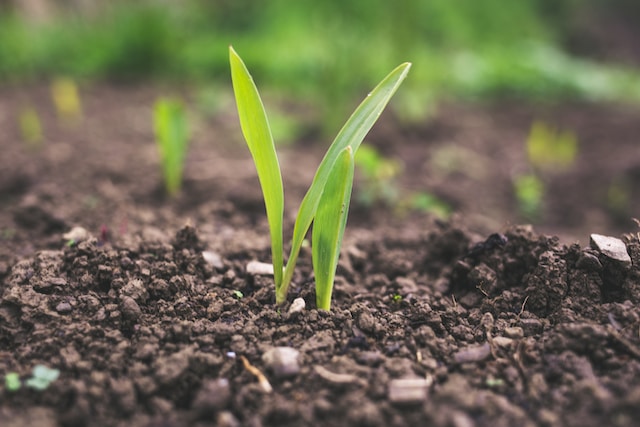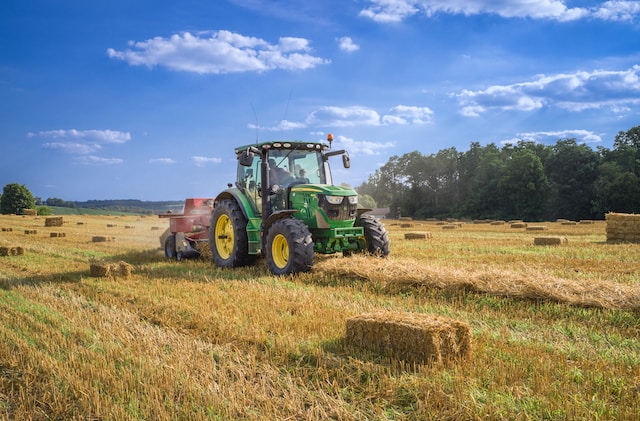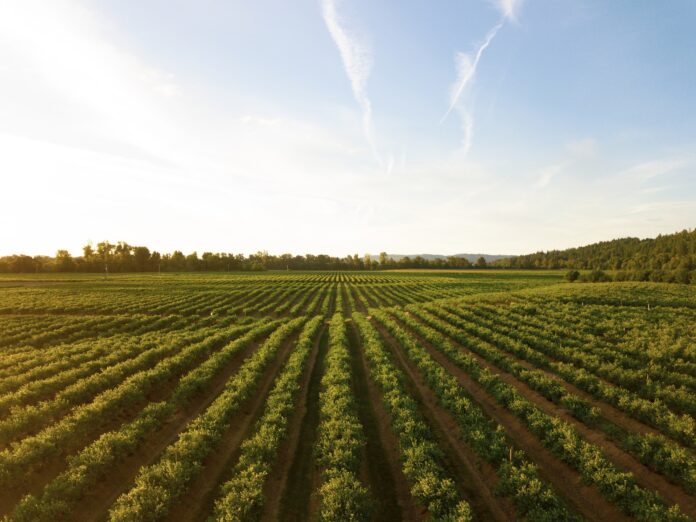Investing in agricultural land is a smart way to provide products to others and make a profitable income. Practicing land management is crucial to protect your investment and ensure it’s working for you in the best way possible. Managing the use and development of land resources will ensure it is preserved for future generations. Good management also helps to protect food and water supplies and strengthens local communities. This comprehensive guide will explain more details about the process of owning, managing, and maintaining agricultural land to help you reap the many benefits that land ownership provides.
In this article:
- Understanding agricultural land
- Tips for buying agricultural land
- Maintaining and improving agricultural land
- Managing agricultural land
- Establishing partnerships and market connections
- Diversification and alternative income streams on agricultural land
Understanding agricultural land
The term agricultural land refers to any land strictly devoted to the process of agriculture, which includes the controlled use of life like crops and food for humans. Farmland is another term for agricultural land. Those who own this type of land are responsible for food production that feeds local communities and people across the world. Here are some examples of various types of agricultural land:
- Farms: This type of land is primarily used for growing crops like corn and vegetables. Many farms grow and harvest food that is distributed not just locally but also nationally and even globally.
- Orchards: An orchard is strictly utilized for growing trees that produce fruits or nuts like oranges, pecans, apples, and many others. This land is vital to producing healthy foods for people to enjoy.
- Vineyards: Vineyards are primarily used to grow grape-bearing vines. Grapes grown in a vineyard are used to make alcoholic and non-alcoholic wines, grape juice, raisins, and table grapes.
- Ranches: A ranch is primarily used to provide grazing and shelter for animals like cattle and sheep. While ranches are also considered farms, they’re used to care for animals instead of plants.
Benefits of owning agricultural land
There are many positive benefits of owning agricultural land, including:
- Investment: Owning agricultural land is a wise investment since it can be resold in the future or passed on to future generations. This type of land is becoming more difficult to come by, so it’s only going to increase in value as time goes on. You may also lease some of your land to make additional money from your investment.
- Long-term appreciation: With farmland, you’re able to produce crops and other commodities that can be sold for a profit. This means that your land appreciates in value over time while also generating income on a regular basis. Owning agricultural land also means that you’ll have a viable food source if times get tough.
- Tax benefits and incentives: Farmland comes with several tax benefits, including a 1031 exchange that allows the land to be invested into an individual retirement account. Participating in a land conservation trust may qualify as a charitable deduction, and many states also offer farms different sales tax, use tax, and property tax exemptions.
Tips for buying agricultural land
If you’re interested in purchasing agricultural land, it’s important to know the best practices to ensure you’re getting a good investment. Here are some tips to help you buy the right type of agricultural land for your needs.
Research and evaluate potential properties
- Start by determining your individual objective. For example, if you’re planning to purchase a vineyard, make sure you choose a suitable location that has a climate that ensures healthy grape growth. Purchasing an existing farm is one way to ensure that your new land will continue to produce whatever it is you plan to grow, harvest, and sell.
- Examine key factors like soil quality, infrastructure, and the availability of water. All three of these factors are crucial to ensure that your land is prosperous – and profitable.
- Always make sure that you do your due diligence when looking for agricultural land. Make sure you get an accurate survey of the land and hire a professional to conduct environmental assessments. Doing this in advance will ensure that you’re getting the right type and size of land you need. The assessment will also uncover any surrounding environmentally protected areas as well as any surrounding farmlands.
Financial considerations
Establish a budget in advance and determine how much money you’re willing and able to spend on the farmland. This will not only help you narrow down your choices but also help you when it’s time to look at financing options. Research finance options available to you, including leases, grants, and other methods, and ensure you’re getting the best terms and conditions possible. The United States Department of Agriculture (USDA) offers a wide range of farm loans to consider based on your individual circumstances and needs.
Don’t forget to take ongoing costs into account when buying agricultural land. This includes ongoing maintenance expenses like the cost of equipment, tools, labor, water and irrigation, harvesting, marketing, and much more. You’ll also need to consider the cost of property taxes and agricultural insurance for your farm and farmland.
Get help from professionals
Before you purchase farmland and start an agricultural business, consider enlisting the help of professionals who understand this unique niche. Seek assistance from local real estate agents who specialize in finding and securing agricultural properties. A qualified agent understands the local area and has experience helping clients buy and sell agricultural land. They can help you find parcels of land for sale, negotiate with sellers, and ensure that you are getting the best possible deal on a purchase.
It’s also important to consult with a few agricultural experts, including soil scientists, environmentalists, and agronomists. An agronomist is an expert in the science of soil management and crop production. These skilled, trained professionals are fully licensed in the United States and several other countries, and their goal is to help you understand things like climate conditions, soil conditions, water availability, and quality, and other factors that may affect your success in farming.
Maintaining and improving agricultural land
Whether you purchase “raw” land or take over an existing farm, there are things you must do to ensure your new investment thrives. Here are some tips for maintaining and improving your newfound agricultural land.

Soil management
A key component of agricultural land management is ensuring you have and keep healthy soil because crops can’t grow and flourish without it. Make sure you do a thorough soil quality test and supplement the soil with the right type of fertilizers to improve nutrient content and density. Soil health and fertility are vital to a prosperous agricultural business. Maintaining quality soil also helps to prevent issues like erosion and reduces the need for tilling, which can help to preserve the environment and save time and labor.
You may hire someone to perform a soil test, or you can purchase DIY tests at several retailers or online. The test should provide clear results about vital information, including nutrient levels (soil health) and pH balance.
If your soil needs some additional nutrients, soil amendments like compost and organic matter and covering crops will help to improve soil quality. Make sure you’re using the appropriate amendments based on the current condition of the soil and the type of crops you’re growing.
Pest and weed control
- Pests can cause serious damage to your farmland and your crops, so implementing effective, safe pest control measures is crucial. Introduce integrated pest management (IPM) practices for a sustainable pest control method. This involves preventing, monitoring, and intervening pests via chemical and non-chemical means.
- Learn how to identify and manage common pests and weeds that may affect your land. Talk to other farmers and consult with an expert about the best ways to eradicate these pests and harmful weeds in the safest and most sustainable way possible.
- Use biological controls like crop rotation and cultural practices to help you minimize the use of chemical-based pesticides. Consider introducing pest-eating insects that will help you manage pests naturally. These biological controls can effectively remove a large population of pests with minimal effort on your part. Cultural control involves selecting and rotating crops, sanitizing the soil, and choosing the best planting and harvest times using pest-resistant plants.
Water management
- Understanding water management in agricultural land is sustainable and beneficial to you and the earth. Proper water management will reduce the need for excess watering of your farmland through recycling and other strategies. The idea of water management is to control water sources to minimize damage to land and property while maximizing the benefits of using water.
- Learn about the best irrigation techniques, including drip irrigation, water recycling and reuse, and sprinkler systems that are energy and water efficient. Use large rain barrels or water tanks to capture rainwater and grade your farmland in a way that prevents excess runoff to help you conserve.
- Implementing water conservation and efficient water use strategies isn’t just better for the environment. It also saves you money on the cost of water and can help you save valuable time and energy so you can focus on other things regarding your agriculture business.
Managing agricultural land
There are many ways you can manage and utilize your agricultural land, and this section explains how to establish farming operations, engage in urban farming, and learn the considerations of personal versus commercial farmland use.
Establishing farming operations
The type of land you own will determine the appropriate farming practices you’ll need to implement. For example, the way you farm an orchard or vineyard will be different from a ranch or a traditional farm. Determine how you’re planning to use the land, and then come up with a game plan to implement the best possible farming practices to suit your needs.
Remember to implement things like regular crop rotation, soil conservation, water management, and effective irrigation techniques. Doing this will help you control weeds and pests, conserve water, and tend to your plants so they will continue to grow and thrive in a healthy, sustainable way.
Consider practicing sustainable and organic farming that does not require the use of harsh chemicals, pesticides, and synthetic fertilizers. Recycle your water as much as possible and implement eco-friendly pest control methods that will ensure healthy land, air, soil, and water for your farm and the surrounding areas.
Engaging in urban farming
Urban farming includes things like operating a community garden, tending to a small farm on your residential property, or any type of farm within a city or urban setting. This option provides you with a wonderful way to give back to your local community, share your knowledge with others, and promote a more sustainable lifestyle for everyone in your area. Urban farming has many benefits, including promoting a cleaner environment, offering healthy and affordable food resources to members of the community, and encouraging others to engage in the act of gardening and farming for themselves.
- Consider your resources for urban farming which may include rooftop gardens, small community gardens on a local plot of land, backyard farming, or a large greenhouse.
- Check with your local jurisdiction, as some may have zoning restrictions when it comes to agricultural use in an urban area.
- Always have the soil tested since urban soil may contain things like heavy metals, contaminants, and runoff from vehicles. You’ll likely need to supplement the soil or add a new layer of topsoil to ensure healthy plant growth.
Personal use vs. commercial use
Personal agriculture involves farming just for yourself and your family. Commercial agriculture is much more complicated and typically requires a lot more licensing and permitting in order to sell your products to the public. It’s much easier to operate a personal farm than it is to operate a commercial one, and you’ll want to make sure that you have the proper insurance, too. Coverage varies greatly depending on whether you’re farming for personal or commercial purposes, so consult with a professional insurance broker to find out what type of insurance coverage you’ll need to ensure you’re protected.
You can develop a profitable income stream from commercial farming, such as selling your crops wholesale or on a smaller scale to the public. Vineyards may make their own wine, while orchards often create other products like juices and jellies. Commercial farmers may sell produce, including grains, corn, fruit, and fresh vegetables, to restaurants, large corporations, and other entities for a profit.
Establishing partnerships and market connections
As an agriculture business, it’s good to establish good relationships and build real market connections to get the best return on your investment.

Networking and collaborating with local farmers
- Get to know local farmers and build relationships with other farmers in your area. Doing so will help you learn more about the best farming practices based on your location and climate, and you’ll get helpful advice from fellow farmers who understand the challenges based on your specific location.
- Sharing your resources and knowledge with others opens the door for lots of amazing marketing opportunities. When you build a network, you’ll be able to gain a wider reach of customers and potential buyers for your produce and other products.
- Look for local farming communities near you, and make sure you participate in a variety of agricultural organizations. The USDA, FFA, National Farmers Union, and American Farm Bureau Federation are all good places to start. Most of these organizations have local branches where you can meet with other farmers and discuss techniques, concerns, and get marketing insight and helpful advice.
Establishing market connections
Knowing how to identify potential buyers and markets for your agricultural products is key to your success. Get to understand your target market, find out what type of demand there is for your products, and then market to these niches accordingly.
Make a list of opportunities, including supermarkets, schools, small businesses, and restaurants near you. Come up with strategies that allow you to connect with these local markets and look for various farm-to-table programs where you can sell your produce to these markets directly. Talk to produce managers at grocery stores, talk to hotels in your area, and find out what the pain points are in terms of them accessing locally-grown produce.
Add your farm to online platforms and agricultural networks that market and sell these products. Developing an online presence is one of the best ways to market your farm effectively. If you’re able, design your own farm website that includes your location, what you grow, what you sell, and prices, if available. Include contact information so potential clients and customers can get in touch with you. Add any times you will be present a local farmer’s markets so people know where to find your products.
Exploring cooperative and community-based initiatives
Agricultural cooperatives, also called Community-Supported Agriculture (CSA) is a type of direct marketing that includes a group of local individuals who pledge their support to farm operations in the area. This type of cooperative can help your farm become the community’s farm, allowing growers and consumers to mutually support one another.
Joining or establishing your own cooperative venture will help to ensure that you share resources and marketing power with others. This joint venture ensures that you get the exposure you need to be profitable while also helping others in the process.
The USDA has a directory of CSA or local farming cooperatives. An organization called Local Harvest also has a nationwide directory of CSAs based on your zip code. If you don’t currently have a CSA in your area, you can start your own. Talk to other farmers and local businesses to gauge interest and start your own chapter so that you’re all benefitting from each other’s hard work.
Diversification and alternative income streams on agricultural land
If you own agricultural land, there are other ways that you can diversify your income via alternative income streams, which we discuss in more detail here.

Agri-tourism and farm experiences
- Agri-tourism mixes traditional farming with tourism experiences like hosting a pumpkin patch, offering hayrides and farm tours, or running U-pick operations where visitors can pick their own produce to bring home. These opportunities provide farmers with additional income streams outside of the traditional means.
- Offering unique farm experiences like behind-the-scenes farm tours, workshops, and educational programs allows you to share your knowledge with others. It may also encourage other people to start a farm of their own and provides you with additional exposure to the public, so more people can get to know your farm and spread the word.
- If you participate in agri-tourism, make sure you provide fun, engaging experiences for visitors. Market your farm by telling locals about special events you host, providing more information about what else you offer in addition to your produce, and including a history of your farm to increase interest.
Value-added products and direct sales
- Consider selling some value-added products to increase profitability on your agricultural land. This can include selling things like jars of honey, bottles of wine, or jams and jellies directly to consumers, just to name a few.
- Value-added options include doing tasks like processing, packaging, and selling your farm products directly to consumers. You can do this at your farm, at roadside stands, online, at local farmer’s markets, in restaurants, or even at local grocery stores.
- If you decide to sell value-added products, make sure you develop a brand by choosing a logo that clearly showcases your farm, identifies target markets, and establishes effective direct sales channels. Use labeling on your products so that customers remember where the products came from, and make sure you include your website (if applicable) and your farm’s information.
Renewable energy and sustainable initiatives
- Choosing to use renewable energy not only saves you money but also helps to preserve the environment. There are some tax benefits to using renewable energy generation on your farm, too. Whether solar, wind, or recycling water, every step you take toward a more renewable farming operation will benefit you.
- Consider installing solar panels, wind turbines, and biomass energy systems on your farm. Each of these options will provide you with a cost-effective and eco-friendly way to power your farm.
- Look at sustainable initiatives like carbon offset programs and ecosystem services that can help to provide an additional revenue stream. With carbon offsetting, you can get paid for every carbon offset unit you generate. Ecosystem services like pollination, water recycling and filtration, and using sustainable energy will help you save money and potentially earn tax credits in the process.

From finding the best parcel of land to networking with other farmers, owning and managing agricultural land has positive benefits. Be sure to explore the many opportunities and advantages of agricultural land ownership and management so you can participate in a meaningful industry. With the right farming practices and some networking, you can become a part of something positive that helps you gain a profit while others enjoy the fruits of your labor.









